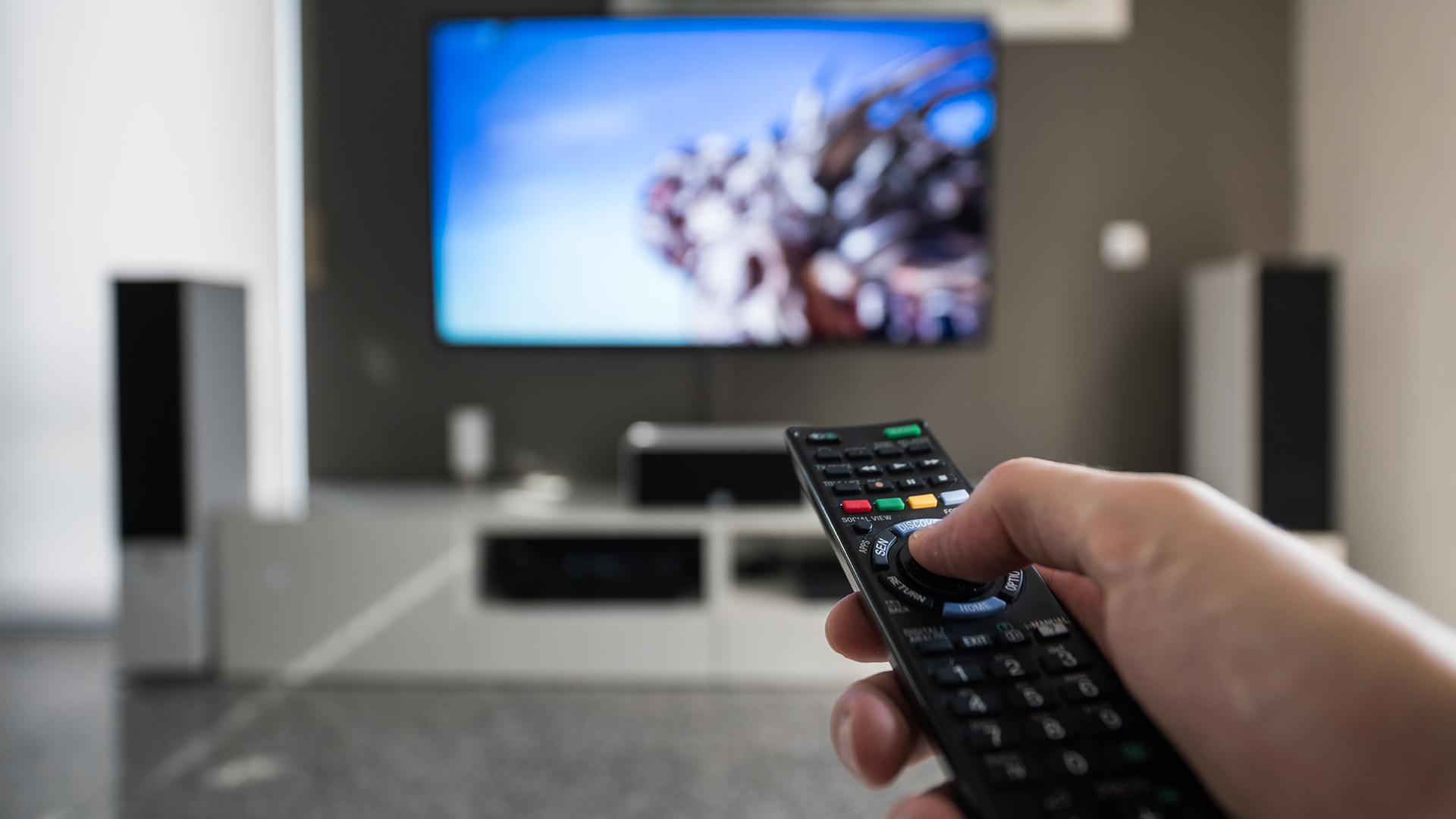Can you use a universal remote for any TV?
Universal remotes can be a simple and inexpensive solution to the problem of lost or damaged TV remotes


If your TV remote suddenly stops working, gets broken or has vanished into the ether, you might be wondering whether you can use a universal remote with your TV to replace it. The good news is: yes, you can use a universal remote with any TV sold today.
To replace your TV's remote, you could buy a device-specific remote from your TV manufacturer, but this could prove expensive and is actually unnecessary. There are numerous third-party replacements available online for specific brands, and since manufacturers rarely change the infra-red (IR) commands for their TVs, a remote designed for a particular manufacturer will almost certainly work on any of its TVs.
But the easiest option may be to buy one of the best universal remotes, and since these are not brand-specific they should be compatible with any of the best TVs from any manufacturer, plus as an added bonus they’re capable of controlling other devices as well. These universal remotes can be picked up from most physical electronics retailers, as well as online stores.
Regardless of which universal remote you choose, the majority use a series of unique code numbers to identify the various commands for whichever device you’re trying to control. As a result, the amount of initial setup will largely depend on how many devices you plan to use with your new remote, and how easy it is to find the particular codes.
Universal remote controls usually come with a list of these code numbers, although you can find them online as well. Whichever approach you take, once you have located the specific code for your TV, you simply enter it into the controller. If the controller is designed to handle more than one entertainment device, you can also add the codes to control things like a Blu-ray player, a soundbar or an AV receiver.
Some of the more expensive universal remotes such as Logitech’s Harmony range use an online database of devices, so all you need to do is connect the remote to a PC and you can download the IR commands for all the devices you want to control. But if this sounds cool, you’ll need to buy a Harmony remote quickly, because Logitech no longer makes them and supplies are limited.
If you’re thinking about buying a universal remote, make sure you take into consideration the size and shape of the zapper itself, because you want something that fits comfortably in your hand and is easy to operate. Also think about the size of the buttons, their layout, and whether they’re self-illuminating, because the latter can be very handy in the dark.
Get all the latest news, reviews, deals and buying guides on gorgeous tech, home and active products from the T3 experts
In fact, you could even consider a new universal remote an upgrade compared to the TV wand you lost or broke – they might have a better layout, for example. However, there is one manufacturer where a universal remote might feel like a downgrade, and that’s LG. The brand’s Magic Remote (included with the best LG TVs) uses a pointer to control the TV, and while a universal remote will still provide the IR commands, you’ll lose that unique pointer functionality.
That one specific example aside, the next time your dog uses the TV remote as a chew toy, or it disappears into the black hole between the sofa cushions, don’t panic. Buy a universal remote and not only will you be controlling your TV like a champ again, but you can consign all the other remotes to a drawer, making your living room tidier and your life less complicated.

Steve Withers is a professional calibrator and freelance journalist who regularly contributes to T3, reviewing audio and video products, and writing articles. Steve has been writing about audio and video products for over ten years and, along with T3, he also contributes to TechRadar, Trusted Reviews, Expert Reviews, AVForums, Pocket-lint, Home Cinema Choice, and Wired. Steve is Level 2 certified with THX, the Imaging Science Foundation (ISF) and the Home Acoustics Alliance (HAA). As such, he remains abreast of all AV technology developments and the latest industry standards as we transition into a new era in home video and audio.